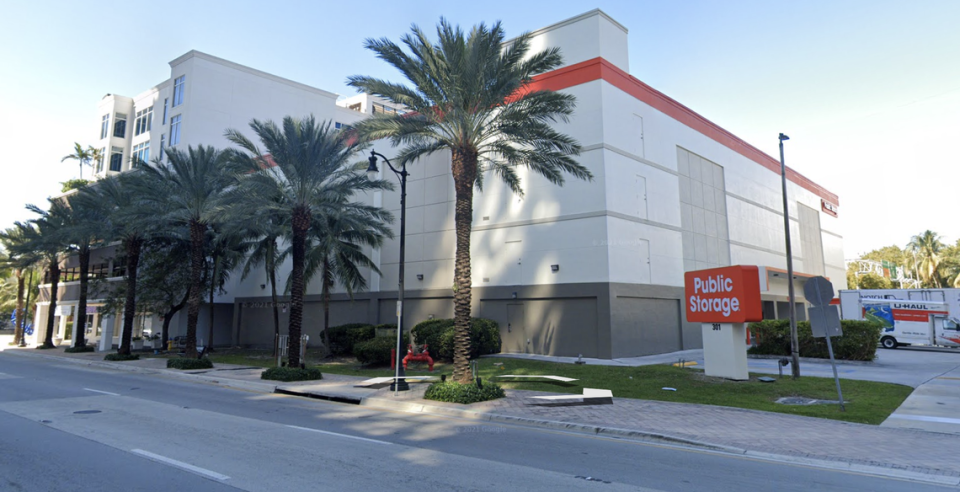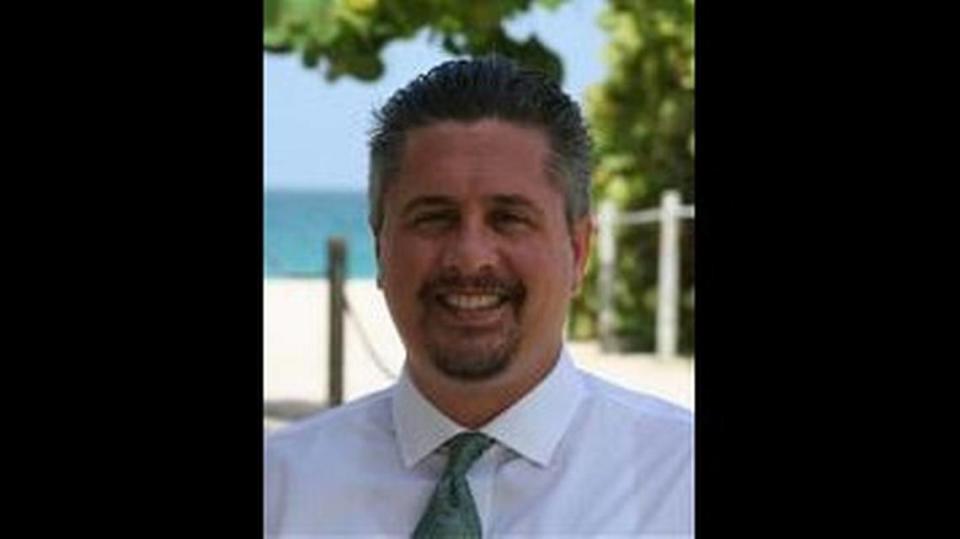No, Champlain Towers records apparently weren’t stolen — but Surfside still can’t find some
The town of Surfside has told the federal agency investigating the collapse of Champlain Towers South that it cannot produce many of the records the agency is seeking for its inquiry into why the building fell.
The records the town ultimately handed over were produced only after local prosecutors intervened on behalf of the investigating agency, the National Institute of Standards and Technology. An assistant state attorney informed Mayor Charles Burkett that documents could be subpoenaed if Surfside didn’t cooperate.
After discovering that many of the records pertaining to Champlain Towers South were missing, the town initially suspected that Surfside’s former building official had accessed a remote storage facility and stolen them. But an investigation into that theory found no wrongdoing by the building official, Ross Prieto, or anyone else, according to a police memo filed earlier this month.

On July 19, according to emails obtained by the Herald, NIST called the mayor seeking help with accessing the town’s records, which are critical to determining the structural causes of the collapse. But Burkett said he never received the message.
On July 29, Miami-Dade Assistant State Attorney Laura Adams emailed Burkett asking for the town to cooperate with the investigation of the collapse. Adams noted that she had had hoped to convey her message in person at a pre-scheduled meeting six days earlier, but that the meeting had not occurred. No explanation of that was given.
Burkett told the Herald the July 23 meeting — at which officials from Surfside, NIST, and the State Attorney’s Office were set to discuss the town’s lack of access to the collapse site — “ended before it began” after Burkett took photos of the site and was escorted away.
“I am aware that my office could issue a subpoena for the documents that NIST has identified as necessary for their investigation, but am hoping that in the spirit of cooperation you could enlist the assistance of your Building Official and Town Clerk to get these materials as soon as possible,” Adams wrote.
Assistant state attorney letter by Casey Frank on Scribd
Burkett replied the same day, claiming no one had passed NIST’s message on to him. He then contacted Judith Mitrani-Reiser, who is overseeing the federal probe. Mitrani-Reiser sent Burkett a list of documents NIST was seeking from the town.
On Aug. 9, the town clerk came through with some of the requested documents, providing hundreds of pages of original drawings and building plans from Champlain Towers South.
NIST Request for records by Casey Frank on Scribd
But the town was still unable to dig up much of what NIST asked for — including “as-built” drawings showing how the building was constructed, shop drawings showing how reinforcing steel was placed, and reports on the condition of the soil beneath the 13-story structure.
“Please know that we understand that most building departments do not receive many of the items you are requesting, and if they do, these documents are not generally retained for 40 years,” Town Clerk Sandra McCready wrote in her response to Mitrani-Reiser.
At the time of McCready’s response, Surfside police were still investigating whether Prieto, the former building official, may have breached the storage units and taken records related to Champlain Towers. But the lack of records appears to stem not from any break-in at the town’s remote storage facility, but rather from a lack of comprehensive records dating back to when records retention rules were less rigid, perhaps along with shoddy record-maintenance practices in general.
Police found “no evidence that Mr. Prieto removed or destroyed any files from the Town’s rental storage units,” Surfside Detective Andres Mendoza wrote in a Sept. 7 report. “There is also no evidence that Mr. Prieto entered the Town’s rental storage units after terminating employment with the Town of Surfside.”
The town began its investigation June 29 — five days after the collapse that killed 98 people — at the urging of its hired crisis communications adviser, Brian Andrews. In an interview with police, Andrews said a meeting with the town clerk and attorney set off “alarm bells” about why officials who had entered the storage units after the collapse failed to find various documents related to Champlain South.

Town officials turned their suspicions on Prieto — who was already facing criticism for potentially failing to heed warning signs about the building in 2018 — because he had access to the storage units in Sunny Isles Beach, which were still listed under his name despite his having left the town’s staff.
But video footage and keypad records from the facility offered no inkling that anyone had intentionally messed with Champlain Towers documents.
“Absolutely not,” Surfside Police Chief Julio Yero said. The investigation, he said, was “sort of in an abundance of caution and to examine every avenue.”
Prieto did not respond to a request for comment.
Building department records are important for investigators who rely on structural drawings to look for design defects and permits, inspections and other documents that might point to a history of problems.
Several experts told the Miami Herald they weren’t surprised the town no longer has some of the records NIST sought, especially given that Champlain South was built four decades ago. In some cases, the town may have never had them.
As-built drawings, for example, are typically provided to building owners but not to municipal governments, said Gregg Schlesinger, a contractor and attorney based in Fort Lauderdale.
“It doesn’t surprise me that Surfside doesn’t have all of these documents, because during that time period they didn’t require them all,” Schlesinger said.
Even records that were filed with the town could have since been destroyed. The 1979 South Florida Building Code required local building officials to keep records of “inspections, Certificates of Compliance, results of tests, plans, surveys and Certificates of Occupancy” for a period of seven years.
But the absence of some of those records could present challenges for investigators, said Dawn Lehman, professor of structural engineering at the University of Washington and consultant to the Miami Herald. Design calculations, for example, could help illuminate how the original builders decided on the thickness of the pool deck slab, which caved in minutes before the partial building collapse.
“There are all these things pointing to a very flawed construction process,” Lehman said. But without more comprehensive records from the original construction, “I don’t know if that’s right,” she said.
Shop drawings would be helpful, too, said Abieyuwa Aghayere, professor of structural engineering at Drexel University. “The shop drawings show how the structure was actually built,” he said. “They take the structural engineer’s intent and put it into pictorial, graphic form.”
The messy history of the building’s construction, which included three different general contractors and a 13th-floor penthouse tacked onto the design amid controversy, could also make information-gathering difficult. And any records kept by the original team may be hard to find: All three original contractors, as well as the original architect and engineer, are deceased.
NIST spokeswoman Jennifer Huergo did not directly respond to questions about the agency’s record-gathering efforts, but she said the agency has been tapping “many sources.”
“NIST has appreciated the cooperation it has received to date from all involved in its investigation into the Champlain Towers South collapse,” she said.
The agency is no stranger to investigating building failures — and creating complex computer models of those failures — in the absence of complete information. In its first investigation, which studied the collapse of the Twin Towers after the 9/11 terrorist attacks, the towers’ remains had been disposed of before NIST received congressional authority to start investigating.
As a result, “NIST could not verify the actual [or as-built] construction, the properties and condition of the materials used, or changes to the original construction made over the life of the buildings,” the agency wrote in a 2008 report on the collapse of 7 World Trade Center, a tower just north of the main World Trade Center complex that fell seven hours after the 9/11 attacks.
Still, NIST was able to model the collapse with help from “copious documents, photographs and videos of the disaster,” as well as interviews with building occupants and first responders. The agency reached conclusions about a probable collapse sequence and found it had been caused by fires ignited by debris from the fallen tower to the south.
In the Champlain Towers investigation, one key source of information could be the condo association, whose finances are now under the purview of a receiver appointed by a Miami-Dade circuit judge. Representatives for the association directed questions about cooperation with NIST to the receiver, Michael Goldberg, who did not respond to a request for comment.
Schlesinger, the contractor and attorney, said even in the absence of certain records, physical evidence should ultimately help investigators model the collapse and learn what caused it.
“NIST will get a ton of information from what they’ve hauled off [from the collapse site]. The physical evidence is there,” he said. “It’s going to come together.”
Lehman agreed. “We don’t usually have that much stuff when we do these kind of analyses,” she said. “But [federal investigators] do have access to the site. That could make up for it.”
But Burkett, the Surfside mayor, said he doesn’t want to wait years for NIST’s final report before knowing what caused the collapse. He is continuing to push for the town’s hired engineer, Allyn Kilsheimer, to have access to the site, which is under county control.
“NIST works in terms of years, not in terms of weeks,” Burkett said. He added that, while the town will cooperate with NIST going forward, “I just wish it was a two-way street in that respect for the sake of our residents’ safety.”
Alex Daugherty, a Miami Herald reporter based in Washington, D.C., contributed to this report.

